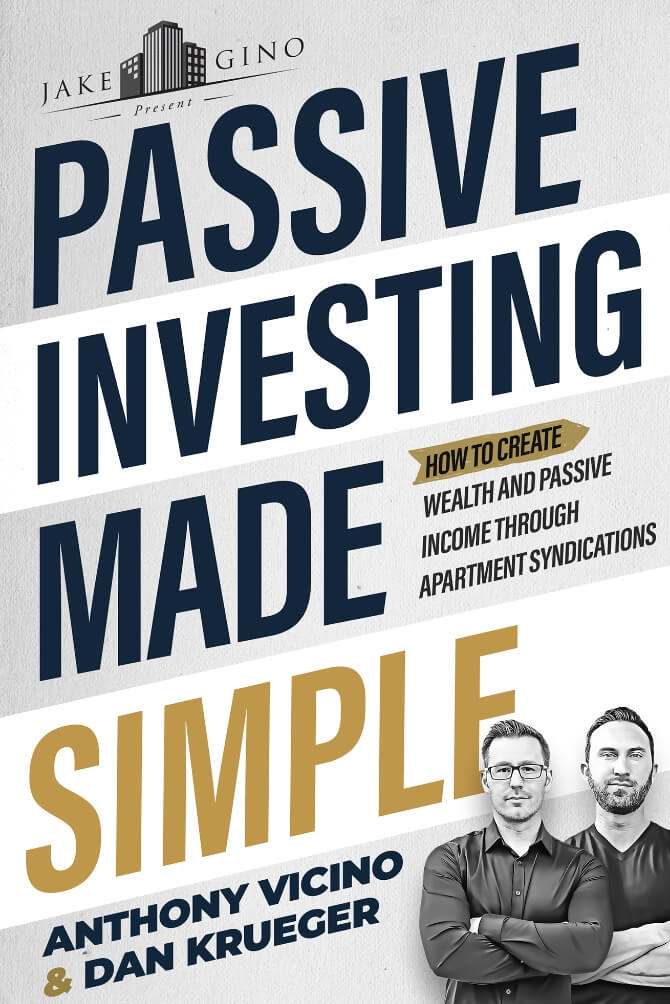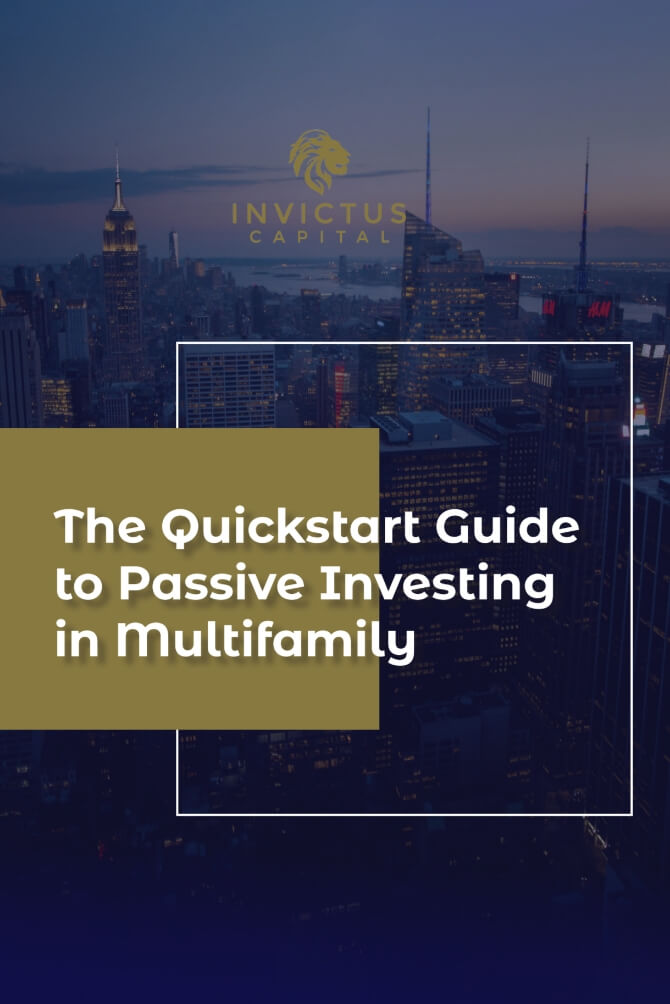The Private Placement Memorandum (aka the PPM) is no investor’s favorite document.
It’s a big, dense document filled with legalese designed in many ways to scare you off from actually investing.
With all that said, it is a necessary evil, and if you want to thrive in the world as a passive investor, you have to gain at least a cursory understanding of this critical document, what’s all in it, why it’s laid out the way it is, and what you should be on the look-out for.
Yes, you should have a legal-eagle on your team give this a thorough read-through, but that’s no excuse for not also reading it yourself.
But fear not! We’re here to help simplify the process and shed some light on what to expect in the PPM in Under 10 Minutes in this week’s episode of Multifamily Investing Made Simple.
Tweetable Quotes:
“If you’ve made it to the PPM section and you don’t know your operator really well, and their experience, and the team around them, that’s really weird and you’ve done something probably wrong.” – Anthony Vicino
“Those risk factors, they’re gonna give you some particular insight into things like where the issues potentially might be with the business plan.” – Anthony Vicino
LEAVE A REVIEW if you liked this episode!!
Keep up with the podcast! Follow us on Apple, Stitcher, Google, and other podcast streaming platforms.
To learn more, visit us at: https://invictusmultifamily.com
**Want to learn more about investing with us?**
We’d love to learn more about you and your investment goals. Please fill out this form and let’s schedule a call: https://invictusmultifamily.com contact/
**Let’s Connect On Social Media!**
LinkedIn: https://www.linkedin.com/company/11681388/admin/
Facebook: https://www.facebook.com/invictuscapitalventures/
YouTube: https://bit.ly/2Lc0ctX

Dan Krueger (00:15):
[Inaudible] welcome to multi-family investing made simple in under 10 minutes in this segment, we’re going to do a deep dive on the term and explain it so you can understand it quickly, easily, and get on with your day I’m Dan Krueger, as always with Anthony Vicino. What did we talk about today?
Anthony Vicino (00:31):
That was a fantastic intro, but I do have to correct. We’re not going to do a deep dive. We’re going to do like a headfirst Swan dive into the shallow end, but we’re going to get all the basics of the PPM that is the private placement memorandum. We’re going to quickly just add a 50,000 foot view. Talk about all the different sections that’s not deep or pretty shallow guys. So from a high level, what is the PPM? What are we dealing with here? What’s it? What’s it do. Yeah.
Dan Krueger (00:56):
Well, you know, to, to find it from a high level, 50,000 foot view, it’s basically a, an offering memorandum that’s put together by business owners who are raising capital and bringing investors into a deal. So that can apply to multiple different industries and a lot of different scenarios, but specifically to real estate, it’s going to be a collection of some specific documents. And those are going to kind of vary depending on the deal, but there’s usually going to be a few core items that are going to be in there. You’ll see most real estate syndications.
Anthony Vicino (01:26):
Yep. So the PPM is just the legal document, providing prospective investors when selling securities that it just States the objectives risks in terms of the investment kind of lays out the field from a very exciting, legal perspective. It’s nobody’s favourite document can be quite big at times. And each PPM is going to be a little bit different depending on the deal, depending on the lawyer putting it together. But generally they all have five sections or five things that you can look for. That the first thing is the executive summary. And in here, you’re usually going to see things about the investment thesis, the pricing minimum subscription amounts, an investor qualifications, disclosures of management fees, things like that, very high level saying, what is the deal? What’s it look like? And so if you can’t read the executive summary and walk away, having a pretty good understanding of what the deals about, what you stand to earn as an investor, what the operator’s plan is to add value or to execute this, then it might not be a very good executive summary.
Dan Krueger (02:25):
Yeah. And I know in our deals, our executive summary is the deck that we put together and present to investors. So the pretty colourful presentation that’s got all the numbers that we’re projecting, who the team is, all that stuff. It’s just that. So it’s that element typically isn’t a legal document. It’s usually just the offering memorandum. That’s a pretty looking document that’s presented upfront. And then everything that follows is going to be just dense. Legal verbiage just works. Yeah.
Anthony Vicino (02:52):
The other sections you’ll see in the PPM is the investment strategy where it’s really outlining at a very detailed level. What’s the strategy here that the operators are planning to execute in terms of the process criteria, exit strategy, all that stuff, laying the groundwork? So you understand what’s actually going to occur once we get ownership of this building, how are we going to add that value?
Dan Krueger (03:15):
Yeah. Is it turnkey? Is it a ground up development or is it a reposition? That’s what that section is going to be telling you.
Anthony Vicino (03:21):
And then another common section you’ll find is the management experience of the team themselves laying out, hey, are these guys just off the street? Have they ever looked at an apartment building? Did they live in an apartment building one time or do they actually have experience operating one of these things? So this is a really important section, but honestly, if you’ve made it to the PPM section and you don’t know your operator really well and their experience and the team around them, that’s really weird and you’ve done something probably wrong. I would pump the brakes real hard, pause and reassess what you’re doing.
Dan Krueger (03:52):
Summary of principle terms, otherwise known as an operating agreement. So basically the, how is the entity that owns the property structured, who are the key players, who are the managing members, depending how big of a deal it is. He might have five or six individuals in various seats in that entity. So you want to see, you know, who those people are and that describes how business is going to be carried out, who makes decisions and all that exciting stuff.
Anthony Vicino (04:20):
Yeah. And that one, the operating agreements is actually super important. And it’s probably the hardest one to read and get through because it’s filled with the most legal ease, but it very clearly identifies. What’s the structure of the business, the entity, and the people behind this? Whose getting paid when, what are the situations where we could vote out those people? Do, is that even possible? Or if I want to sell my shares, how do I do that? That’s going to be all outlined in the operating agreement. So it’s super important. You have your legal professional take a look at that and make sure it’s in your best interest.
Dan Krueger (04:54):
Yeah. I’d say most of investor’s questions when they get to this stage of reviewing all the legal documents, most of the answers are probably going to be in the operating agreement or summary of principle terms. Now, if you get into some more exotic deals, you’re also going to want to look at the next section very carefully, which is the risk factors for our deals. This section is fairly bland because we don’t really do very complex deals. We buy stuff, that’s got some upside potential, but is still run pretty well. So we’re not recreating the wheel. So our risks are basically the general risks you find in most, a real estate deal. Now, if you get into a ground up development deal, there might be some additional things in there that you want to look at. Or if there’s some environmental nuances, maybe there’s, you know, your hurricanes or flood zone, like those types of things are going to be called out there. So what was a good section to read or at least have a lawyer review on your path?
Anthony Vicino (05:46):
Yeah. Those risks factors. They’re going to give you some particular insight into things like where the issues potentially might be with the business plan or current market trends or the operator expertise. So like if we’re doing a really heavy value add a complete repositioned cut in the place, and you know, there’s going to be a lot of verbiage in there talking about all the things that could go wrong with that business plan, because there’s, you know, things could go wrong. If you know, current market cycle right now, we’re in the middle of COVID. And so, you know, some things are different with the market. And so there’s going to be a section in there outlining, Hey, you know, who knows what the market could do? This might happen, that might happen. And then the operator expertise, honestly, that’s not a super big risk factor. If they are an experienced team, that’s been doing it for a while, but if they’re new and it’s the first indication, you might see some verbiage in there saying these guys have never done this before. So good luck. I don’t know. Yep. So that’s going to be in the PPM as well. It’s going to be separate though, in terms of like the document that you’re actually signing and with the PPM, you don’t actually sign anything. Right? The subscription agreement is what you’re signing.
Dan Krueger (06:49):
Yeah. I know with us, when we deliver our legal docs, people, we say here’s the PPM. And it’s a collection of all of these things, which includes a subscription agreement, which is basically just saying, Hey, I’m buying X amount of shares for X amount of dollars on this date. Here’s my name. That’s the big one that you signed to be in the deal. And we bundled it together. I know a lot of other people, when I say PPM, they just think about mainly the disclosures and the operating agreement. So depending who you’re talking to, there might be a slight variation in exactly how they define it. But for us, the PBM and slept like all that stuff in that category
Anthony Vicino (07:22):
All wrapped into one. All right. So parting words of advice when it comes to the PPM, what’s your number one piece of advice?
Dan Krueger (07:30):
Have a lawyer look at it because unless you’re really well versed in legal language, most people aren’t going to read through this thing. You’re going to go through. Most people are probably going to look through it and look for some key members for some fees, which they should and find those little key bits in there. But you also want to have a professional read through it. That’s working for you, the, your pain to, to read through and say, Hey, is there anything in here that’s hidden in some legal jargon that actually isn’t that favourable to you? It’s just a quick check to make sure everything is up to par and it looks normal. Probably only costs a few hundred bucks, but it’s worth it. If it helps you avoid those kinds of black Swan events where there’s a shady individual out there, that’s got some strange language hidden somewhere in there
Anthony Vicino (08:09):
Agreed fully 1000% could not agree more so that will do it for us. At multifamily investing made simple. We have simplified the PPM in under 10 minutes. We had a whole minute and a half year to spare. So we got to Jackson,
Dan Krueger (08:25):
This is now six minutes or real estate, six minute millionaire
Anthony Vicino (08:31):
People that would sound like crazy cheap. Yeah. I’ll work on that next episode States here. And before you guys go, make sure that you go over to iTunes, Spotify, wherever you’re listening to this drop review. We really appreciate any feedback you have helps the algorithm get this out there into the universe. And we appreciate you guys. We’ll catch you next week.


